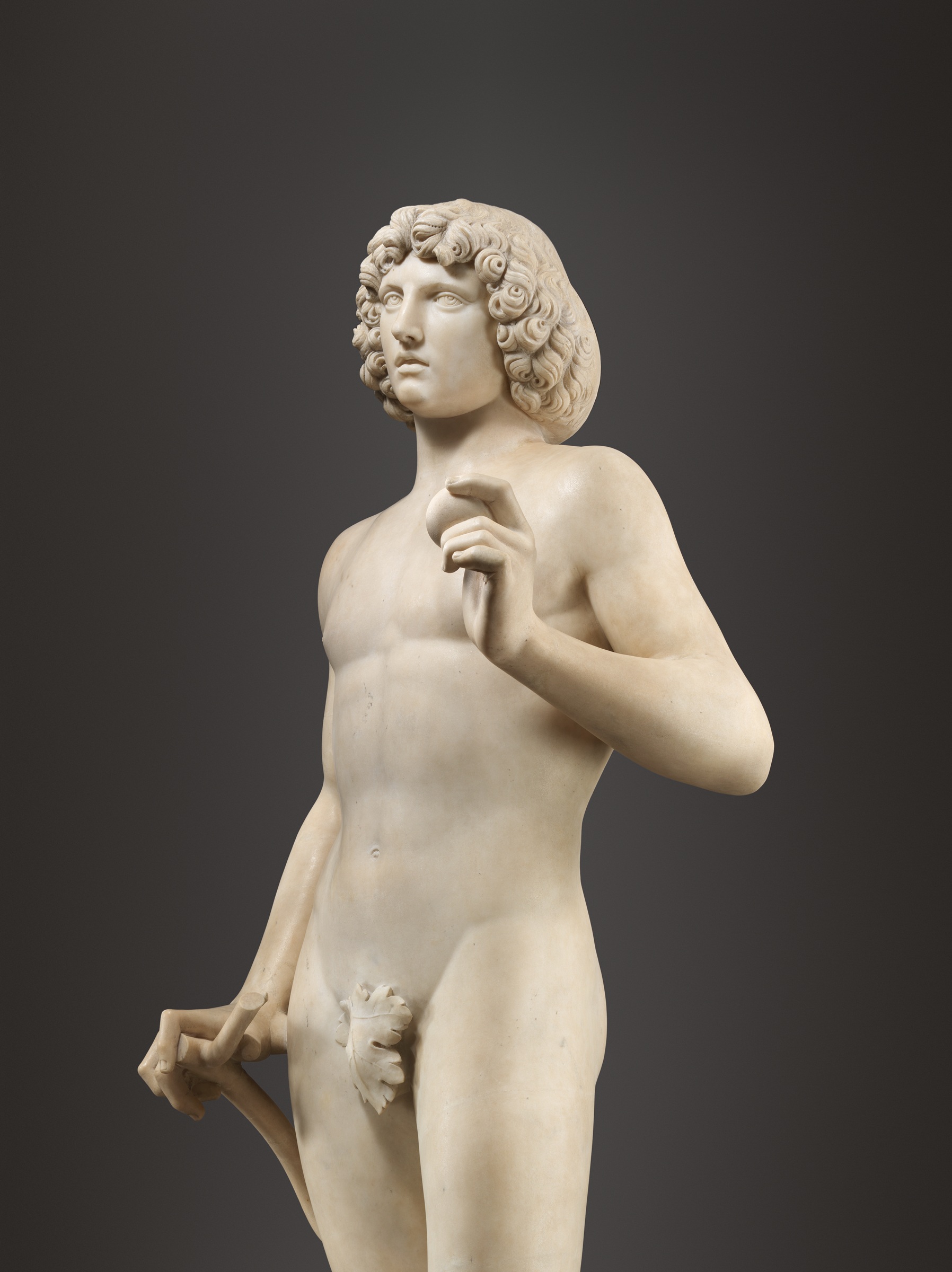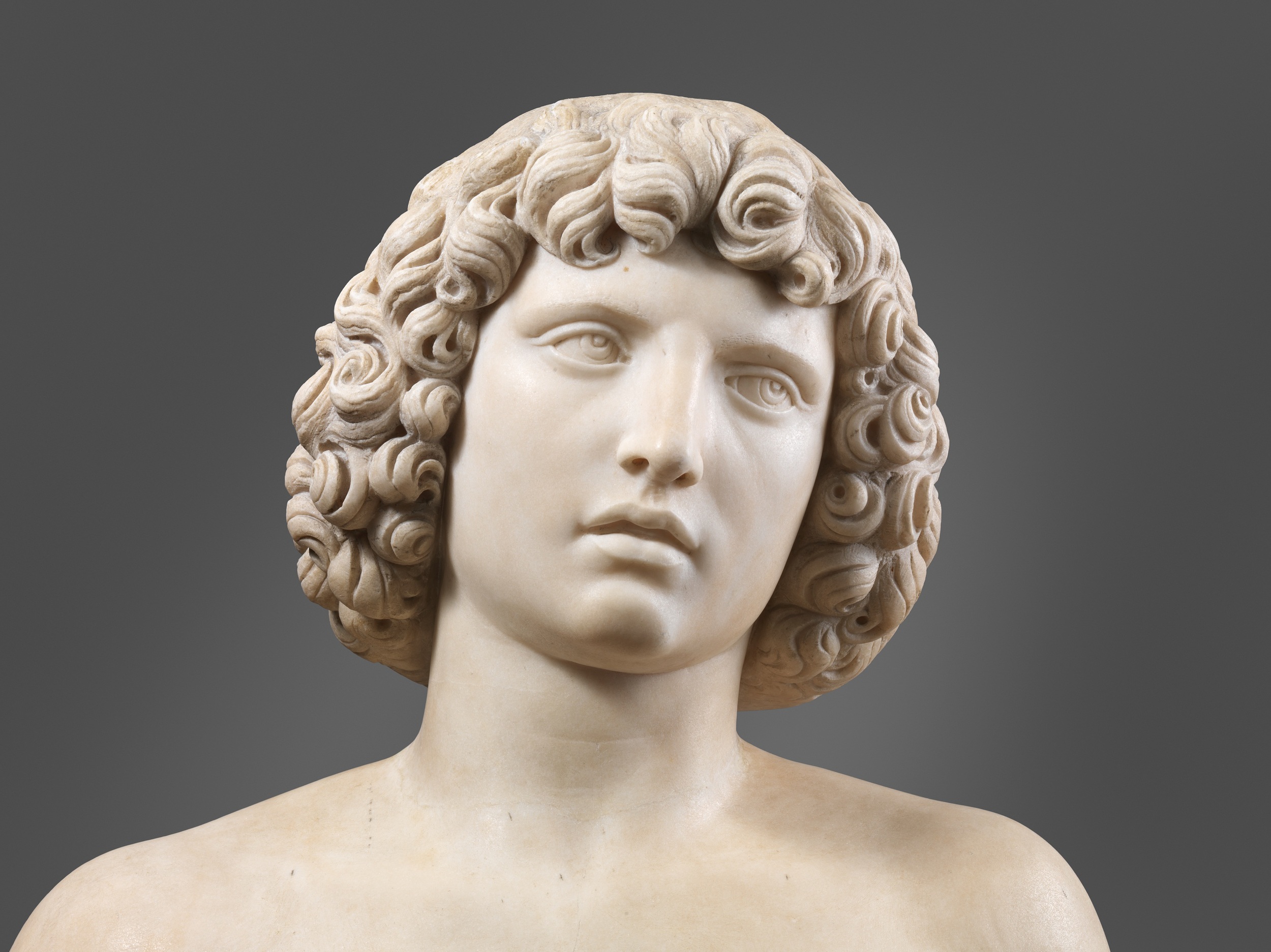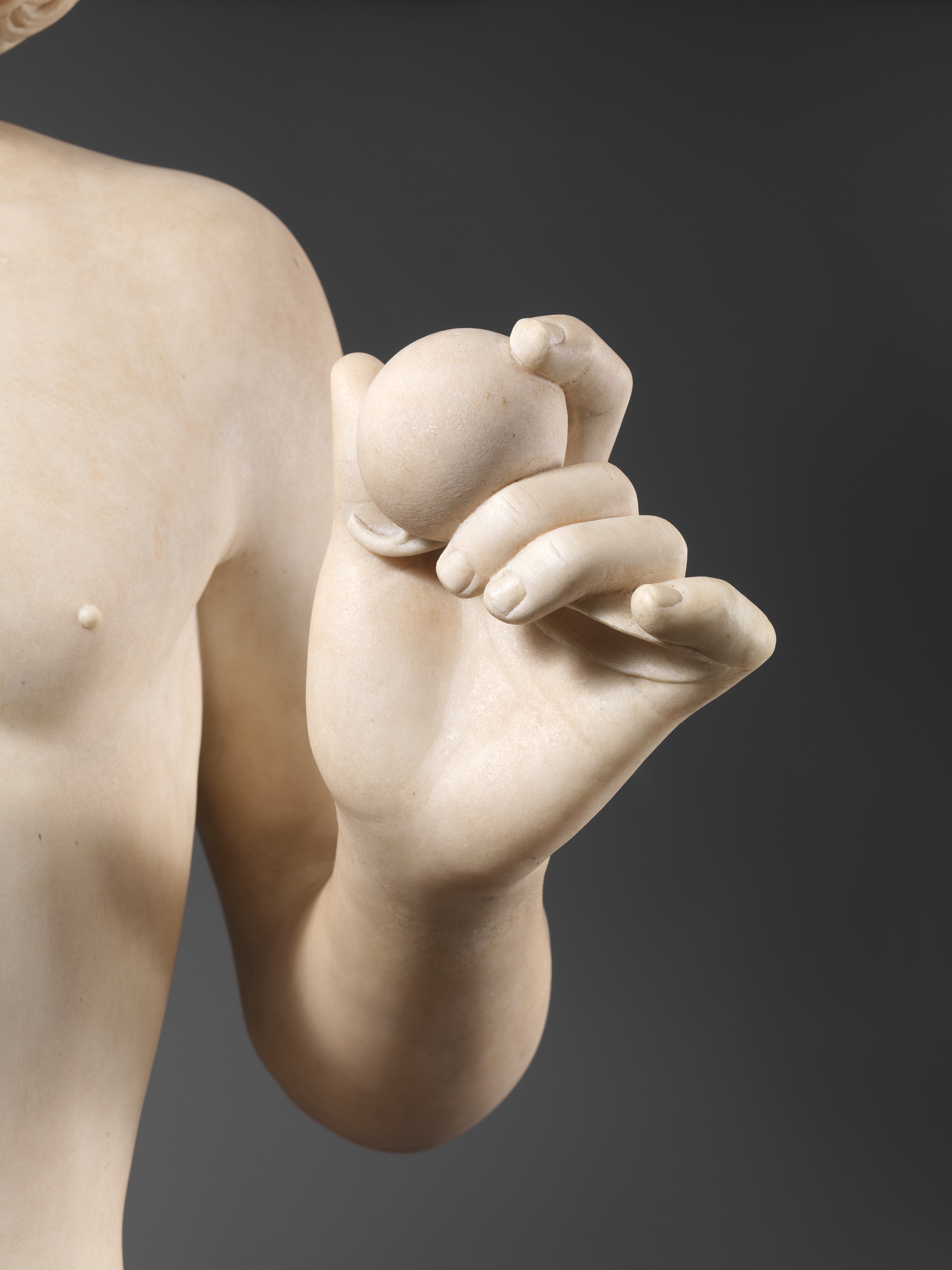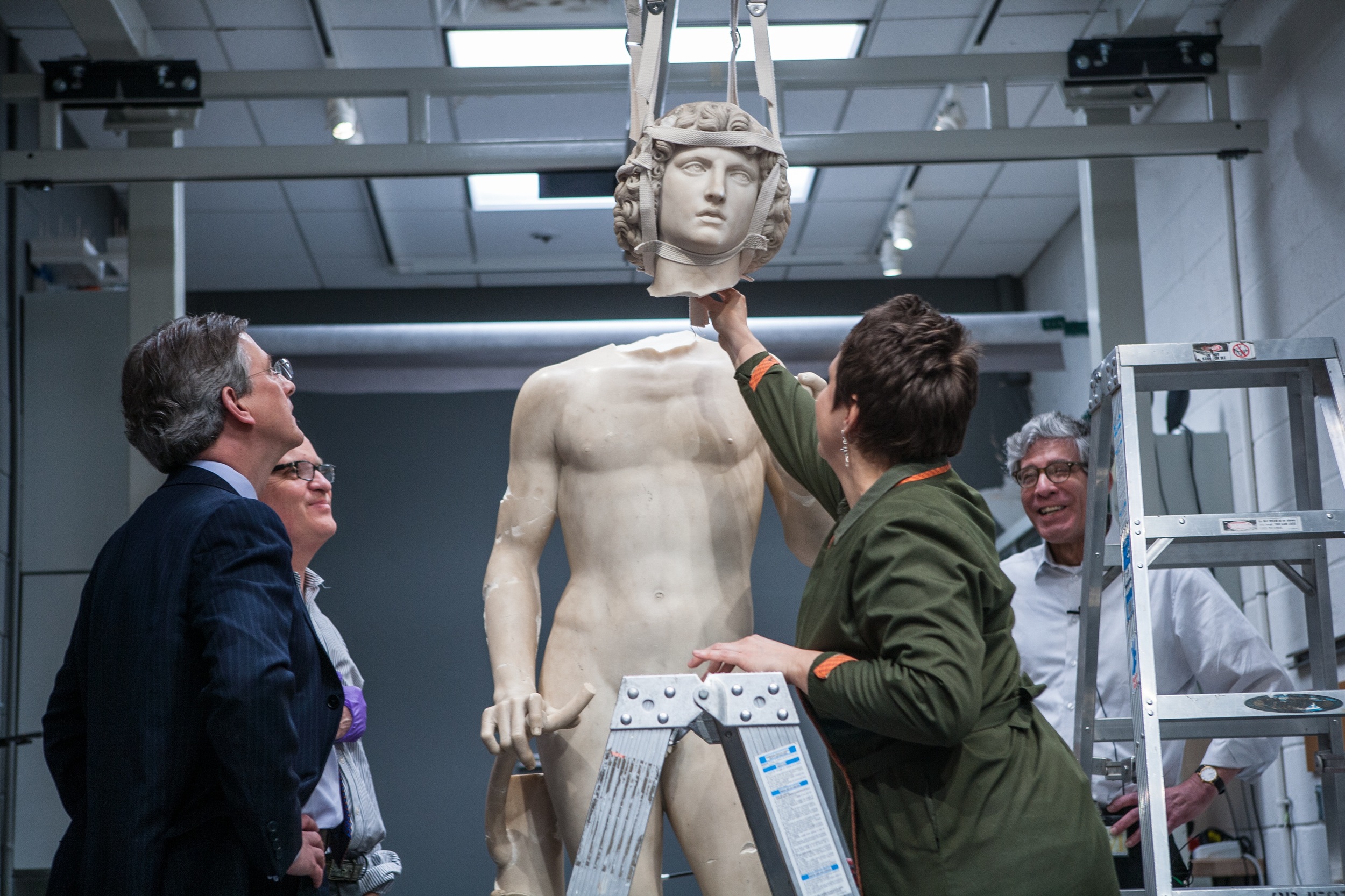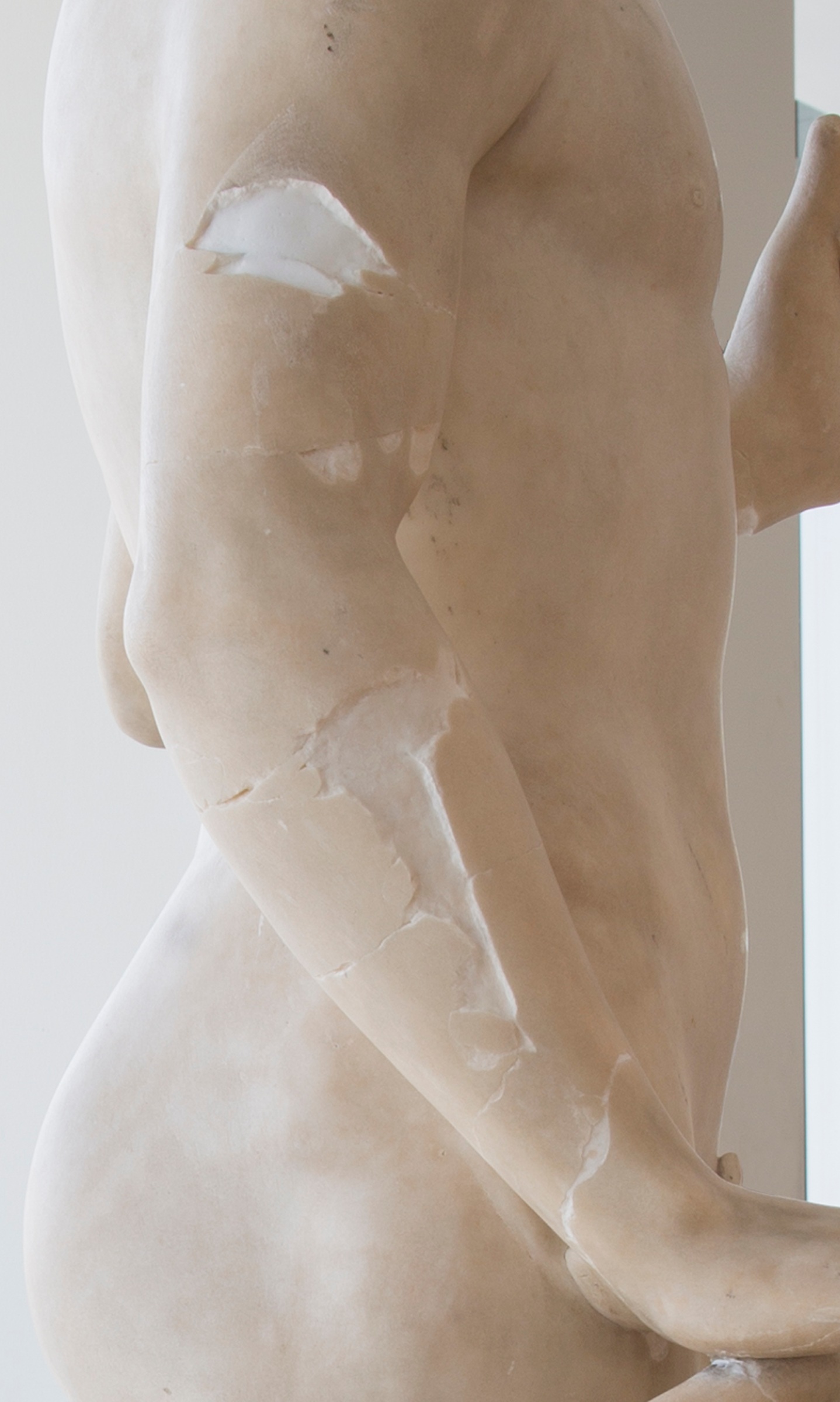The Metropolitan Museum of Art’s resurrected Adam (marble, circa 1490) by Tullio Lombardo. Courtesy of The Met. Tullio Lombardo (Italian, ca. 1455-1532). "Adam" Ca. 1490-95. Marble. The Metropolitan Museum of Art, Fletcher Fund, 1936. Photo: The Metropolitan Museum of Art, Photograph Studio/Joseph Coscia, Jr.
For years, he graced The Metropolitan Museum of Art’s Velez Blanco Patio, just off the Great Hall – a paean to the kind of youthful male beauty that stretches back to the Archaic Greeks. But all of that came to a crashing halt on the evening of Oct. 6, 2002 when Adam, a 15th-century funerary marble by Tullio Lombardo, fell off his pedestal and smashed into 28 pieces.
It turns out that all the king’s horses and all the king’s men could put Adam back together again. A dozen years after the unsettling incident, The Met unveiled the 6-foot, 3 ½-inch statue, along with a video on its reconstruction, last fall in a new, temporary space. And yet, it seems fitting to talk about the work in this season that is dedicated to Adam’s fall from spiritual grace and the Resurrection of the new Adam in the person of Jesus Christ.
Part of what makes this sculpture’s reconstitution and thus the subsequent exhibit so incredibly moving is the subject’s stunning beauty to begin with. The thick curls framing a face characterized by large eyes, a straight nose and full lips and winding about a graceful neck. The high chest, taut abs, long, slim haunches and sinewy calves and arms. Adam’s gorgeous, and so we can say with Hamlet, “What a fall was there.”
Being made for the funerary altar of the Venetian doge Andrea Vendramin, Adam was not meant to be seen in the round. (You can tell this from the curls at back of his head, which have not been articulated. It’s as if he has a bit of a bedhead.) But it is a measure of the lovingness with which Tullio sculpted Adam that his backside is voluptuously molded. Indeed, the delicately chiseled face and physique – which appear favorably alongside the Apollo Belvedere and Antinous Farnese in The Met’s handsome, informative companion Journal, Volume 49 – seem to have been touched by God himself, a reminder that the Deity created Adam in his own image.
Tullio imagines his Adam at a crossroads, a moment that many of us will recognize, when we want something so badly that we’re tempted to act against our better nature. Adam gazes warily off to the left, his raised left hand holding a small apple from the Tree of the Knowledge of Good and Evil. He is frozen in time, but we know what he can only surmise. In a moment, he will make the wrong decision, and the game will be changed not only for him but for all of us forever.
The seal of his fate is the veined fig leaf that calls attention to the genitalia it covers.
“So habituated are we now to the coy convention of the fig leaf that we often forget that the genitalia are never covered by this means in ancient sculpture,” curators Luke Syson and Valeria Cafà write. “All the fig leaves we see attached to them today are later additions. Thus Tullio’s decision to include the fig leaf without explaining its presence – it is neither woven into a loincloth nor attached to a conveniently placed branch – allows him to render it symbolic. Most unusually, Tullio has represented the leaf from the back so as to carve all its veins, making this an area of intense detail….In this way, Tullio alludes to…the denouement of Adam’s decision to eat the forbidden fruit. The fig leaf is a synecdoche for his discovery and banishment, the symbol of his disgrace.”
Adam’s fall, as countless articles have noted, was underscored by the sculpture’s literal fall. What The Met did was nothing short of miraculous – studying its construction in great depth before making a move and then using pins and adhesives. It’s like seeing a plastic surgeon go to work on a movie star or a great athlete.
And yet, the scars remain visible. We expect art to be perfect, to compensate us for the ways in which life isn’t, but art is no more perfect than humanity is. Nevertheless, the eye and the mind adjust, finding a new integrity.
Adam may still hold the apple, forever poised before his fateful decision. But this is Adam after Eden – scarred yet upright, still beautiful, whole once more.

